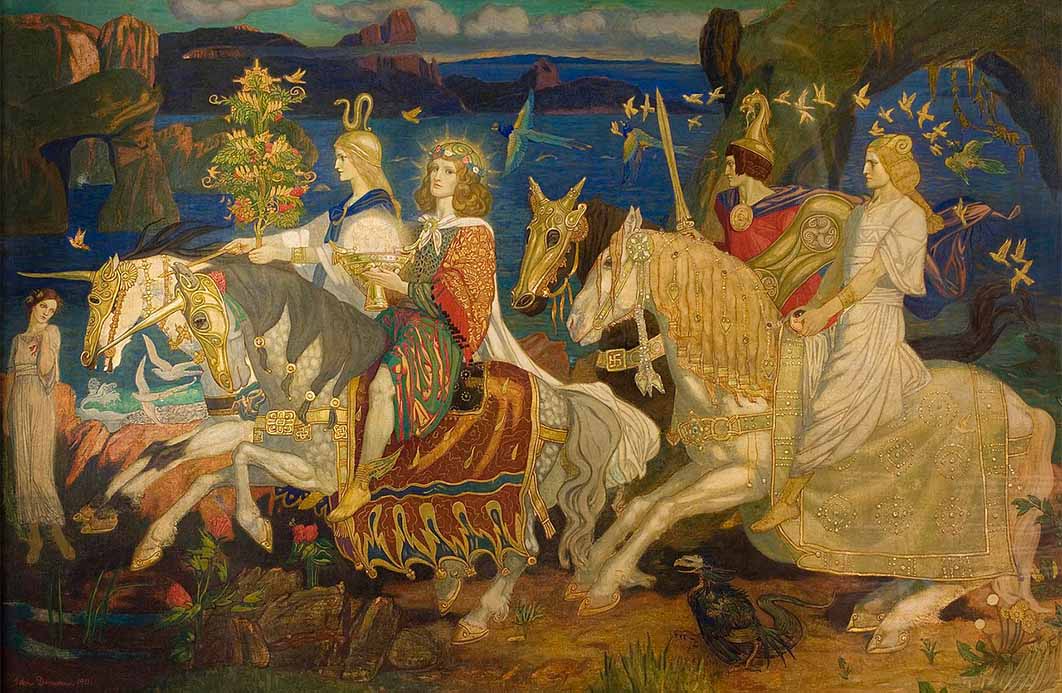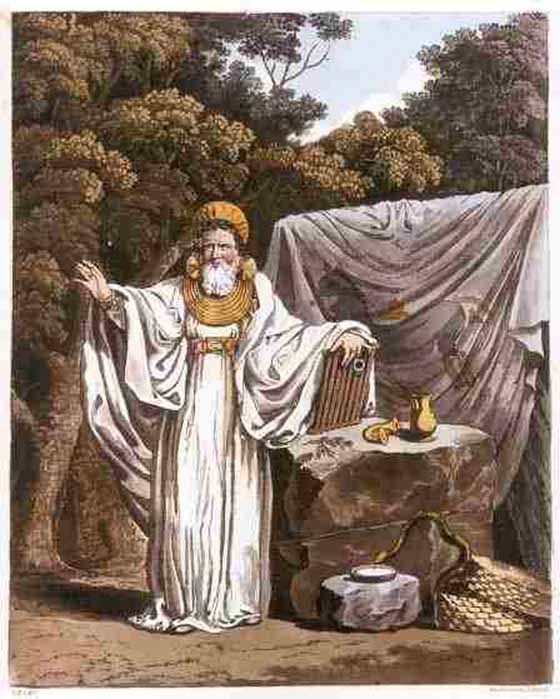
Tracing The Origins Of The Tuatha Dé Danann To Greece
The Tuatha Dé Danann is one of the most mysterious peoples of the British Isles. Fascinatingly enough, some Celtic traditions place the prehistory of the Tuatha Dé Danann on the Greek islands in ages past. Although scholars often disregard this information as later interpolations, authors like Robert Graves in his well-known book, The White Goddess, did take it seriously, writing: “According to an archaeologically plausible Irish tradition in the ‘Book of Invasions’, the Tuatha de Danaan had been driven northward from Greece… and eventually reached Ireland by way of Denmark…. The date of their arrival in Britain is recorded as 1472 BC, for what that is worth.”
If there is any truth to this tradition, it would perhaps not pertain to classical Greek times but rather involve early Celtic and pre-Homeric traditions. None of these are available any longer, except for what remains of those Celtic traditions mostly in Christianised versions, and what is preserved of pre-Homeric traditions in later Greek traditions. This makes the task at hand all the more difficult and warrants a deeper look into the migration traditions about the Tuatha Dé Danann.
Migration Legends
Who was the Tuatha Dé Danann? Scholars usually take the name to mean “people/folk of the goddess Danu”, with Danu referring to an ancient Mother Goddess. The Welsh called them ‘Children of Don’. They were regarded as having been of supernatural or divine descent. Among the members of this ancient people count many Celtic gods, some of whom having been worshipped across the Celtic world. They were remembered for having brought civilisation to the Celts.
According to the Lebor Gabála Érenn, or The Book of Invasions, which recounts the different settlements on the British Isles that took place through the ages, the Tuatha Dé Danann once resided in the eastern Mediterranean, in cities like Athens, where they were the teachers of the Greeks. In this role they were portrayed as especially skilled in the crafts and magic arts (druidism). Among those early ancestors counted mighty kings, different clans and great poets. In fact, the earliest Druids, namely Partholón and his companions, were also said to have come from Greece. There can be little doubt that this tradition is strikingly similar to the Greek tradition about the Pelasgians who once resided in Athens and were the teachers of the Greeks in matters concerning their mystery cults.

Arch Druid in His Judicial Habit', from The Costume of the Original Inhabitants of the British Islands by S.R. Meyrick and C.H. Smith (1815) (Public Domain)
The Tuatha Dé Danann is said to have once ruled over four great cities, called Falias, Gorias, Murias and Finias. It is not clear where these cities were located but there are hints that they might have been located somewhere on the Greek islands.
The Tuatha Dé Danann is also associated with the Middle Danube Region. This view follows from the name, Danube, said to have been derived from the root, dānu. It is also in keeping with Herodotus’ location of the Celts in the region of the Upper Danube, as well as beyond the Pillars of Heracles, ostensibly on islands in the Atlantic Ocean, during the fifth century BC.
What is interesting is how many names of rivers in Eastern Europe had been derived from the same root, names like Don, Dnieper, Dniester, Donets and so forth. Some scholars ascribe this phenomenon to the Celtic presence in these areas. If the migration legends are taken seriously, it could however also imply that the people who eventually settled and lived along the Upper Danube once resided further east, a view that would be consistent with them having migrated from the Mediterranean northwards through these regions presumably already during the late Bronze Age or early Iron Age.
- Book of Invasions: The Mytho-Historical Text About Those Who Came to Conquer Ireland
- Hyperborea: Mythical Land That Fascinated Writers of the Ancient World
- The Greek God Apollo and His Mystical Powers
From the Upper Danube Region the Tuatha Dé Danann evidently migrated northwards to the northern islands of the world, according to The Book of Invasions. Eventually they arrived north of Scotland and later ruled over Ireland as well as the five kingdoms of the Cymru where they were called the ‘Children of Don’ in Welsh legend.





